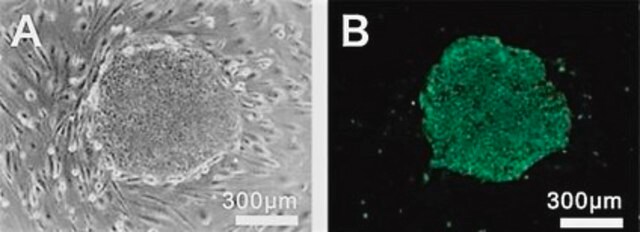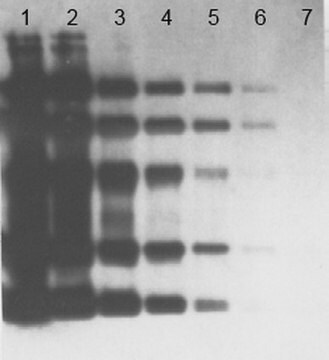SCT240
BioTracker™ Blue TFCH Oxidative Stress Probe
Synonym(e):
Live Cell Imaging Probe
About This Item
Empfohlene Produkte
Biologische Quelle
human
Qualitätsniveau
Mol-Gew.
calculated mol wt 280.63 kDa
Verpackung
vial of 1 mg
Hersteller/Markenname
Millipore
Wachstumsmodus
N/A
Methode(n)
cell based assay: suitable
flow cytometry: suitable
immunofluorescence: suitable
Nachweisverfahren
fluorometric
Versandbedingung
dry ice
Lagertemp.
−20°C
Allgemeine Beschreibung
Anwendung
Leistungsmerkmale und Vorteile
Physikalische Form
Lagerung und Haltbarkeit
Sonstige Hinweise
Rechtliche Hinweise
Haftungsausschluss
Signalwort
Warning
H-Sätze
Gefahreneinstufungen
Eye Irrit. 2 - Skin Irrit. 2 - STOT SE 3
Zielorgane
Respiratory system
Lagerklassenschlüssel
11 - Combustible Solids
WGK
WGK 3
Analysenzertifikate (COA)
Suchen Sie nach Analysenzertifikate (COA), indem Sie die Lot-/Chargennummer des Produkts eingeben. Lot- und Chargennummern sind auf dem Produktetikett hinter den Wörtern ‘Lot’ oder ‘Batch’ (Lot oder Charge) zu finden.
Besitzen Sie dieses Produkt bereits?
In der Dokumentenbibliothek finden Sie die Dokumentation zu den Produkten, die Sie kürzlich erworben haben.
Unser Team von Wissenschaftlern verfügt über Erfahrung in allen Forschungsbereichen einschließlich Life Science, Materialwissenschaften, chemischer Synthese, Chromatographie, Analytik und vielen mehr..
Setzen Sie sich mit dem technischen Dienst in Verbindung.






